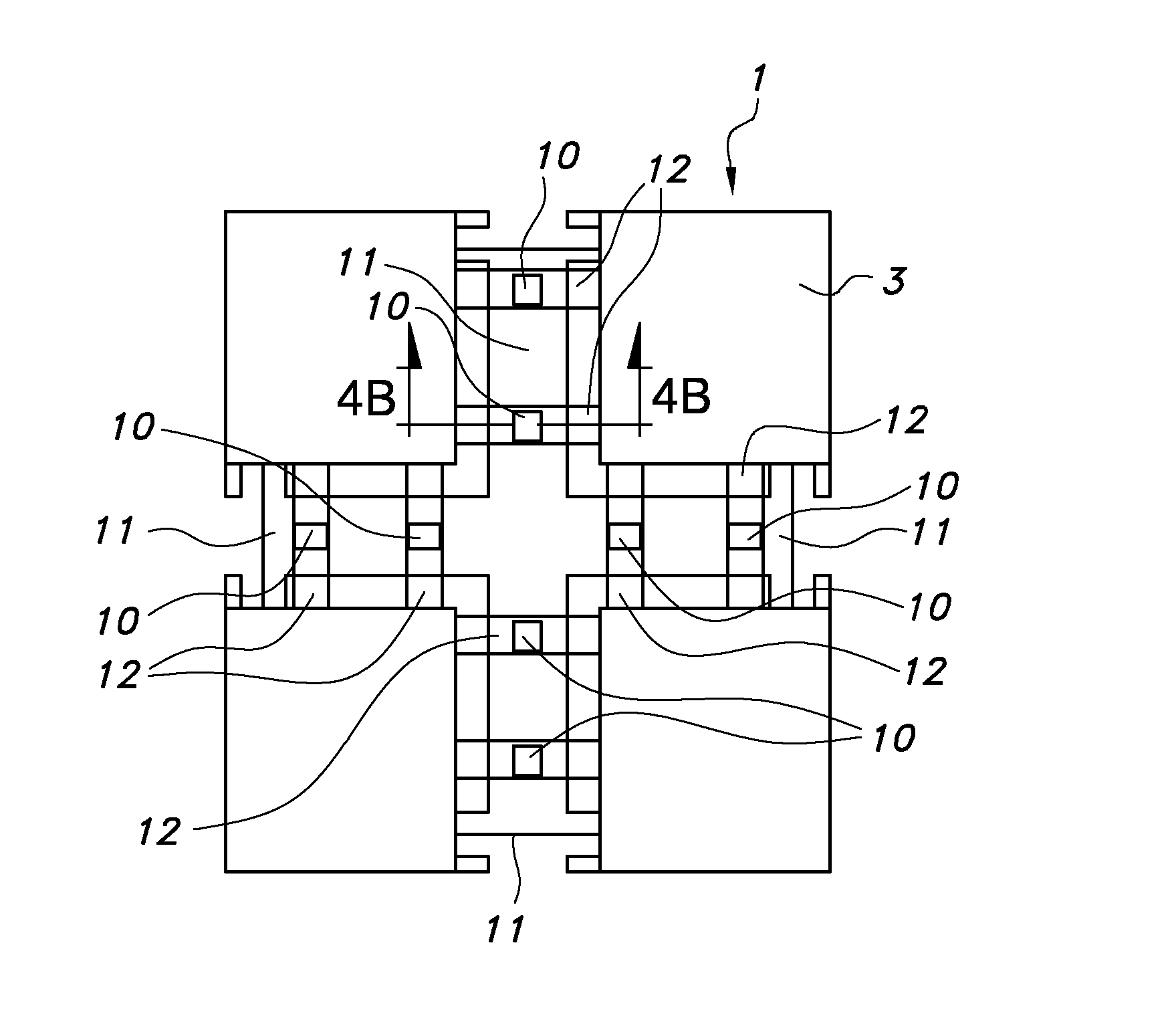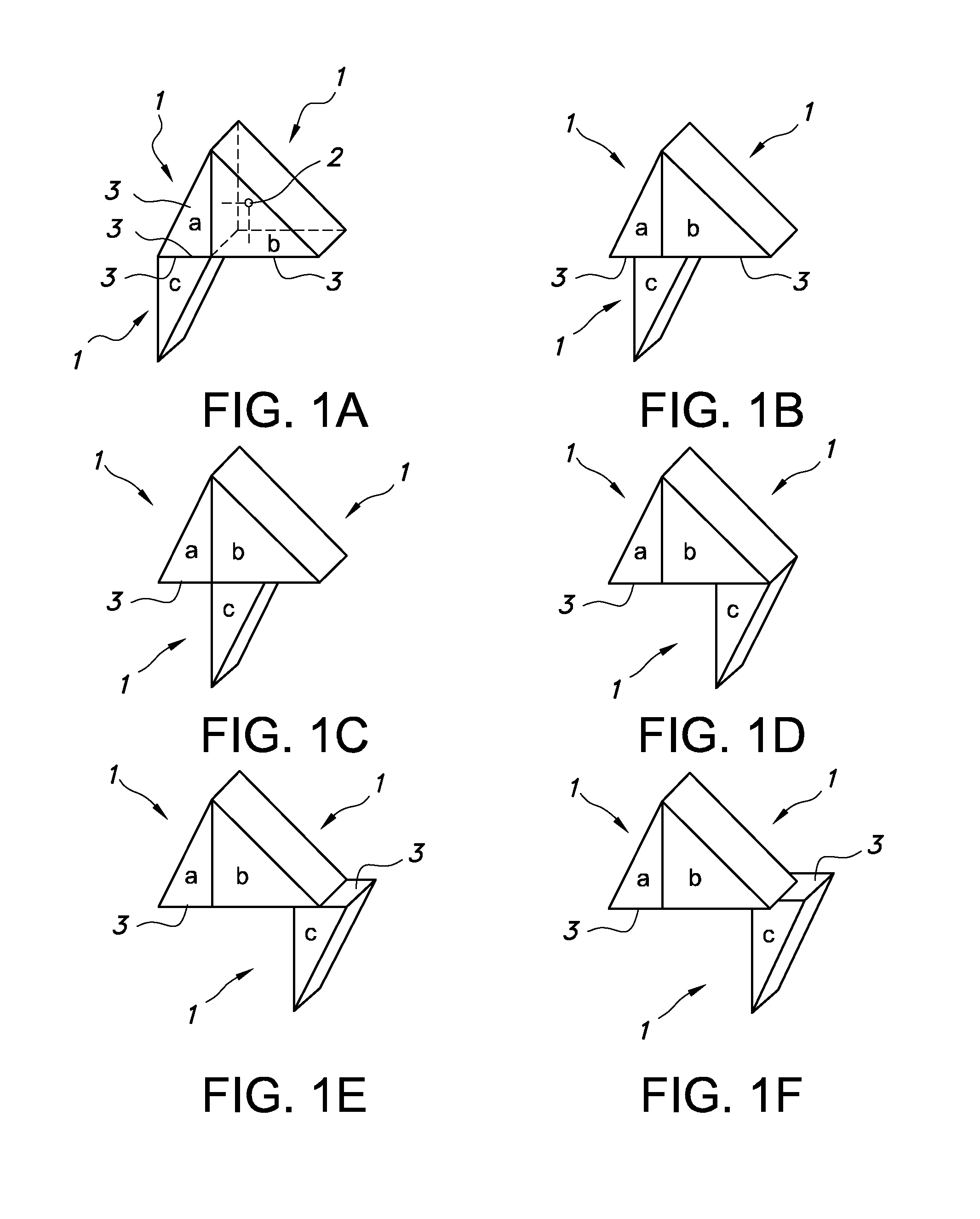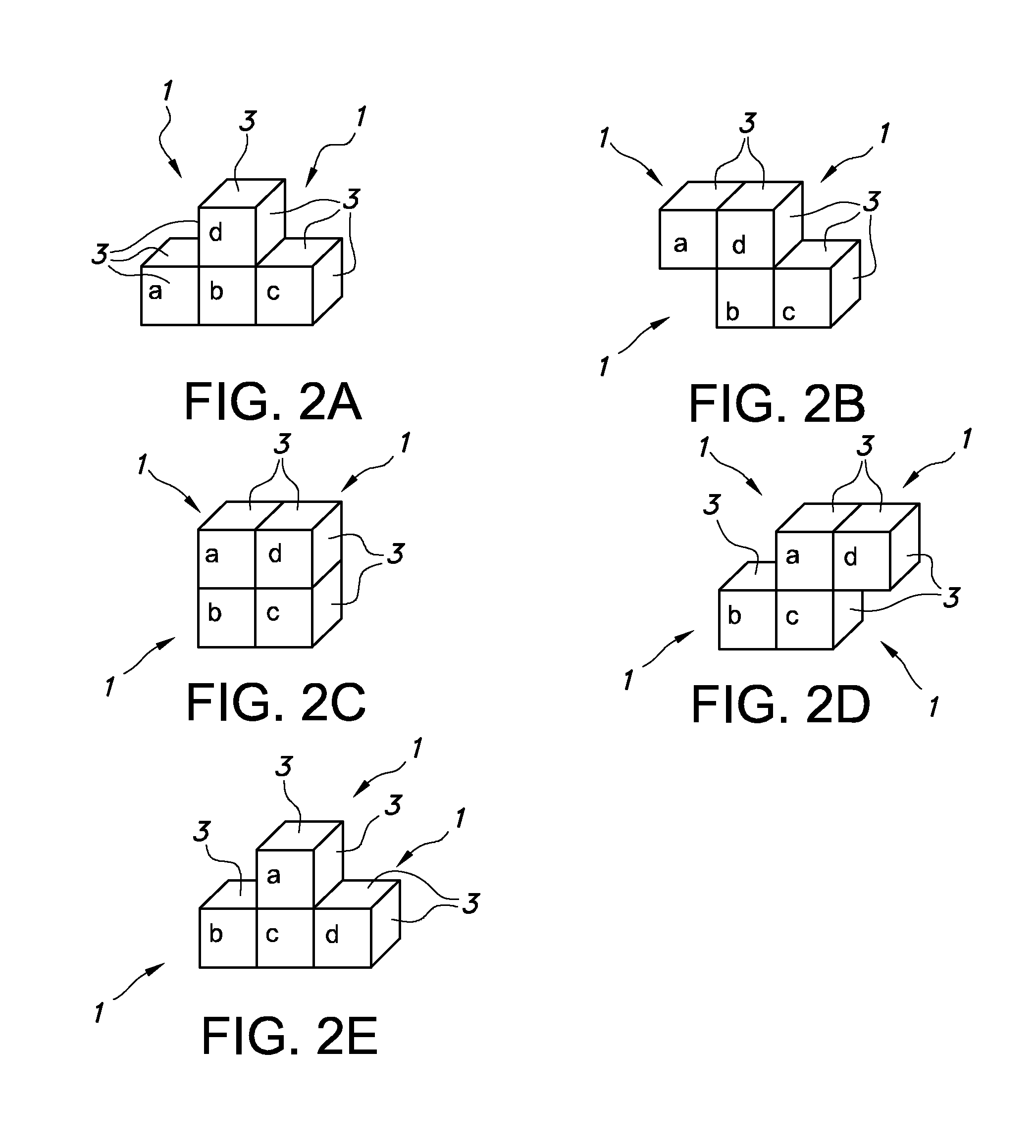Shape-shifting a configuration of reusable elements
a technology of configuration and elements, applied in the field of elements, can solve the problems of requiring handling and reusable known elements, and achieve the effect of flexible us
- Summary
- Abstract
- Description
- Claims
- Application Information
AI Technical Summary
Benefits of technology
Problems solved by technology
Method used
Image
Examples
Embodiment Construction
[0317]In this detailed description of embodiments, elements have a general reference number 1, and will individually be indicated with letters ‘a’, ‘b’, . . . in order to distinguish them from one another. In the discussion, the reference number 1 will be left out when referring to element ‘a’, ‘b’, etc. The elements a, b, . . . can be identical. They can also differ in shape or functionality. The elements have a centre 2 (only indicated in element b of FIG. 1A). This centre can in general be a centre of mass (also referred to as “centre of gravity”), or alternatively a geometrical centre (also referred to as “centroid”) of an object. If an element has a uniform density, the centre of mass is the same as the centroid.
[0318]Each element 1 can have one or more faces 3 that are adapted to allow an element 1 to be positioned on or against another element 1. In particular, the one or more faces 3 can be adapted to allow elements 1 to displace with respect to one another with the surfaces...
PUM
 Login to View More
Login to View More Abstract
Description
Claims
Application Information
 Login to View More
Login to View More - R&D
- Intellectual Property
- Life Sciences
- Materials
- Tech Scout
- Unparalleled Data Quality
- Higher Quality Content
- 60% Fewer Hallucinations
Browse by: Latest US Patents, China's latest patents, Technical Efficacy Thesaurus, Application Domain, Technology Topic, Popular Technical Reports.
© 2025 PatSnap. All rights reserved.Legal|Privacy policy|Modern Slavery Act Transparency Statement|Sitemap|About US| Contact US: help@patsnap.com



